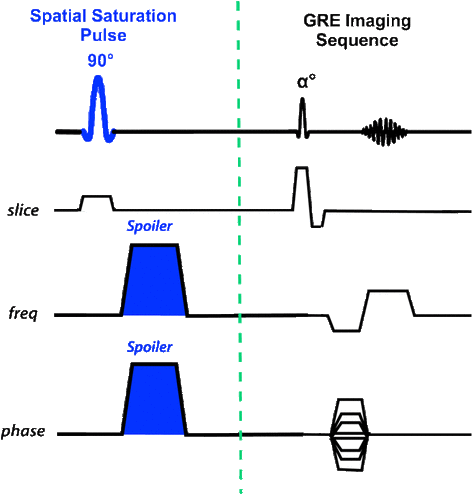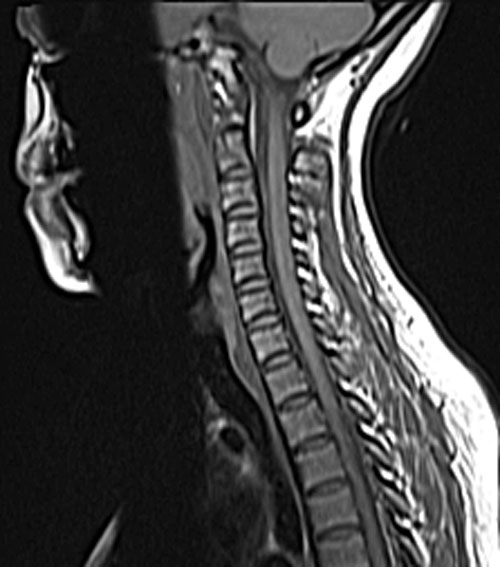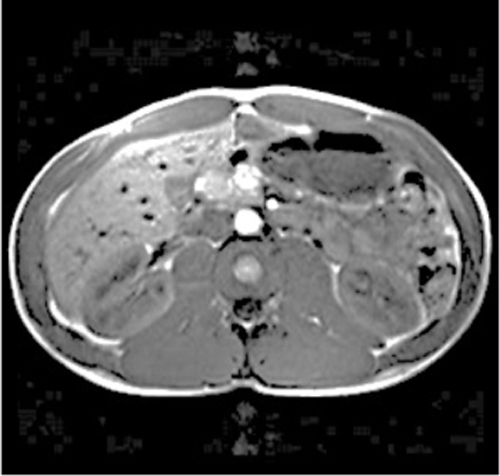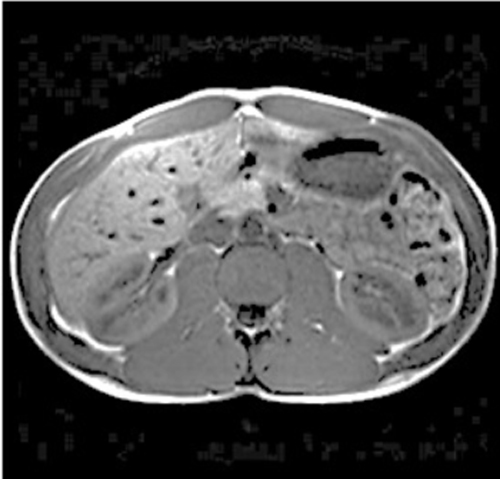Saturation pulses involve the application of RF energy to suppress the MR signal from moving tissues outside the imaged volume to reduce or eliminate motion artifacts. Three types of saturation pulses exist:
Spatial Saturation Pulses are based around a spatially selective 90°-pulse that flips magnetization into the transverse plane. Unlike the 90°-excitation pulses used for imaging, these spatial saturation pulses are transmitted at a different carrier frequency and are designed to produce maximal phase dispersion across the saturation band. No slice rephasing lobe is used. In fact, the spatial saturation pulse is followed by strong spoiler gradients placed along the FE and PE axes to further suppress residual transverse magnetization.
Spatial saturation pulses are known as "Presat pulses" by Siemens, Hitachi, and Canon; "Sat pulses" by GE, and the "REgional Saturation Technique (REST)' by Philips. Spatial saturation bands are graphically prescribed on scout images by the technologist prior to scanning. Their angulation, center, and width may be adjusted, with typical thicknesses in the 5-10 cm range.
|
Flow saturation pulses are spatially selective saturation bands applied to suppress unwanted flow artifacts from vessels entering a slice. The saturation band is applied parallel to the imaged slice a location a few centimeters upstream (optimal position depends on flow velocity). Although mostly used to suppress arterial flow for routine imaging, in time-of-flight (TOF) MR angiography vascular saturation slabs are used to suppress venous flow.
|
For TOF MRA the venous saturation pulse follows along at a constant offset next to each imaged slice in the multi-slice acquisition. These moving vascular saturation pulses have different names according to vendor: GE ("walking sat"), Siemens ("travel sat" or "tracking sat"), Philips ("travel REST), Hitachi ("sequential pre-sat"), and Canon ("BFAST").
Spectral Saturation Pulses suppress a particular chemical species, usually fat, based on its chemical shift. Also known as Fat-Sat or Chemical Shift Selective (CHESS), these are short-duration RF-pulses tuned to the resonance frequency of fat and applied immediately before the start of an MR imaging sequence. Chemically selective pulses cause the signal from fat to be nulled (saturated) while the water signal is relatively unaffected. Since moving subcutaneous fat is a major source of motion artifact, suppressing fat throughout the entire image results in artifact reduction. The design and use of these pulses is discussed more completely in a separate Q&A.
Advanced Discussion (show/hide)»
A fourth important type of RF-pulse also exists called the Spatial-Spectal (SPSP) Pulse. This can be thought of as a hybrid between spatial and spectral saturation pulses that excites magnetization in a specific location and with a specific spectral content.
The SPSP pulse has shorter duration than the two pulses separately and offers better intolerance to B1 inhomogeneity. Many SPSP variants exist, but all consist of multiple RF subpulses played out under a broad RF-envelope with a concurrent oscillating bipolar slice-selection gradient. SPSP pulses are becoming more commonly used, especially for echo-planar and spiral acquisition techniques.
References
Felmlee JP, Ehman RL. Spatial presaturation: a method for suppressing flow artifacts and improving depiction of vascular anatomy in MR imaging. Radiology 1987;164:559 –564.
Rosen BR, Wedeen VJ, Brady TJ. Selective saturation NMR imaging. J Comput Assist Tomogr 1984;8:813-818.
Felmlee JP, Ehman RL. Spatial presaturation: a method for suppressing flow artifacts and improving depiction of vascular anatomy in MR imaging. Radiology 1987;164:559 –564.
Rosen BR, Wedeen VJ, Brady TJ. Selective saturation NMR imaging. J Comput Assist Tomogr 1984;8:813-818.
Related Questions
How do Fat-Sat pulses work?
How do Fat-Sat pulses work?





